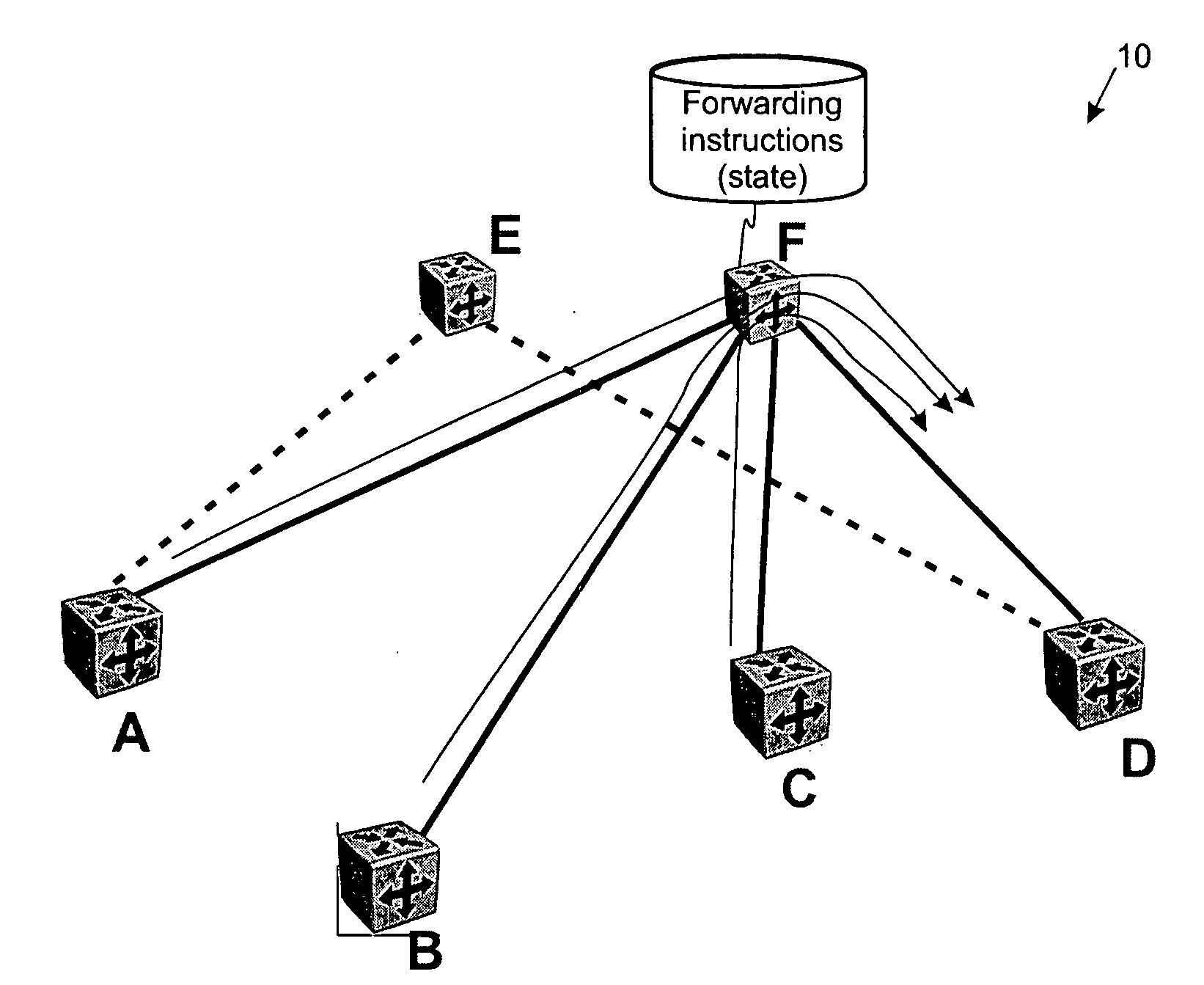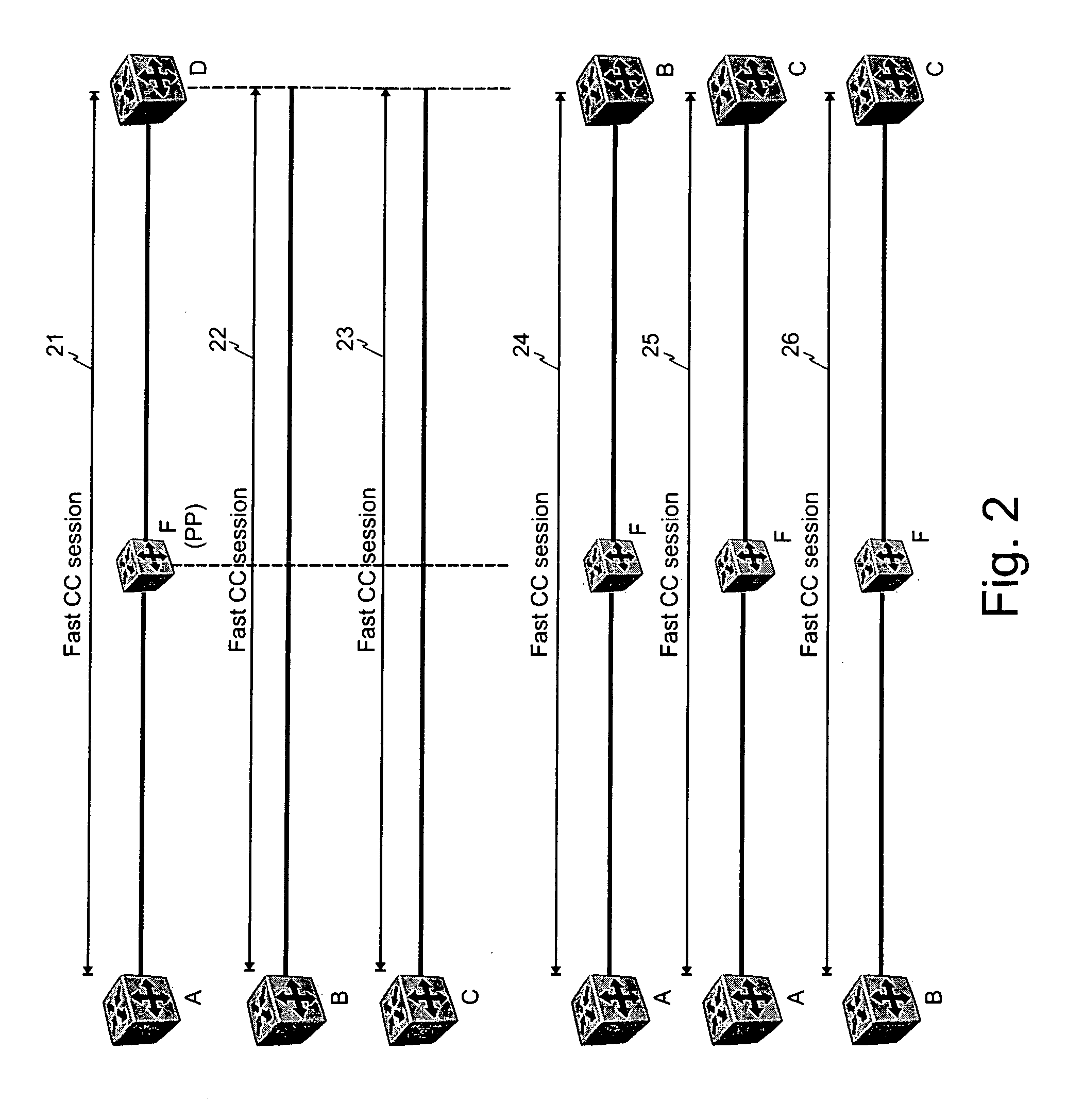Scaling oam for point-to-point trunking
a trunking and oam technology, applied in the field of oam session performance, can solve the problems of presenting a significant processing burden on a node, unable to receive a cc message, and qos problems, so as to reduce the number of oam session messages, and free up bandwidth for other traffi
- Summary
- Abstract
- Description
- Claims
- Application Information
AI Technical Summary
Benefits of technology
Problems solved by technology
Method used
Image
Examples
Embodiment Construction
[0044]FIG. 1 shows a simple network 10 having nodes A-F. Communication links join nodes A-F, B-F, C-F and D-F. FIG. 1 shows the point-to-point trunks that are required to connect any of the end points A-C with node D via node F. A total of three trunks are required: a first trunk is routed between nodes A and D via intermediate node F; a second trunk is routed between nodes B and D via intermediate node F and a third trunk is routed between nodes C and D via intermediate node F. To connect any other of the nodes A-C in the network with one another, three further trunks are required: a trunk routed between nodes A and B via node F; a trunk routed between nodes A and C via node F and a trunk routed between nodes B and C via F. These additional trunks are not shown, for clarity. Backup routes can be provisioned between a pair of nodes via node E, and only one such route (node A to node D via node E) is shown, for clarity. A switch at node F stores state in the form of forwarding instru...
PUM
 Login to View More
Login to View More Abstract
Description
Claims
Application Information
 Login to View More
Login to View More - R&D
- Intellectual Property
- Life Sciences
- Materials
- Tech Scout
- Unparalleled Data Quality
- Higher Quality Content
- 60% Fewer Hallucinations
Browse by: Latest US Patents, China's latest patents, Technical Efficacy Thesaurus, Application Domain, Technology Topic, Popular Technical Reports.
© 2025 PatSnap. All rights reserved.Legal|Privacy policy|Modern Slavery Act Transparency Statement|Sitemap|About US| Contact US: help@patsnap.com



